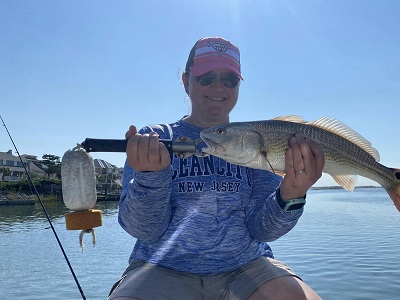
For many anglers, fall is their lost season when it comes to fishing. They trade their time on water for hunting, football, and indoor activities between September and December.
Too bad! They are missing out on what could be their most treasured season if they only would try!
Fish and fishermen are experiencing a time of transition in the fall. The small, bite-sized forage supply that was available during summer’s salad days is almost gone. Larger lures and larger minnows are only available until the end of the season when the colder temperatures as well as slower fish metabolisms mean that smaller baits are a better option.
Changes in conditions can cause forage species to move, and predators adapt accordingly by following food sources to autumn locations or adapting to the food supply in their area.
Fish sense winter approaching and start to gain weight, eating heavily while burning fewer calories in the cold environment.
Anglers will find that the autumn transition is a memorable time on the water. This is due in large part to the beautiful weather, plentiful beauty, and cooperation of fish. The sun moves at a lower angle. Humidity and heat fall. Foliage can take on vibrant colors.
The volume of traffic on the water drops dramatically after Labor Day and continues to decline as winter approaches.
TIMING IS EVERYTHING WHEN FISHING
The phenomenon of turnover is a common problem in many lakes. It occurs when cool water from below mixes with cooling water from above. This can make inshore fishing difficult for days, or even weeks. A move to another lake may be necessary if you find turbid water contaminated with decomposing plant life.
As fall progresses, prime food sources tend to gang up in predictable locations. As different predator species search for easy meals in the same areas, mixed bag catches are quite common.
Multiple species of baitfish can be attracted to rivers, creeks, and harbors. Opportunistic predators are also attracted.
Threadfin shad, gizzard shad, and threadfin sharks move into creek arms and coves, and their movements control the movements of predators like bass.
You can locate largemouth bass and white bass species by following schools of shad onto windblown structures or other structures. Hot action with surface and subsurface shad-shaped lures will be likely to follow.
Bluegills and other sunfish members are critical forage species in many ponds, reservoirs, and natural lakes. They move to the deep edges of the aquatic vegetation, where they are attracted by bass as well as toothy predators such as northern pike or musky.
An indicator of fish activities could be a sign that you are on the right track to an exciting charter fishing adventure.
Birds that feed on open water will often notice schools of baitfish or the largemouth bass, or striped bass, below them. Surface boils can be a sign that fish are being fed. If you are able, move stealthily towards the activity and cast to the edge of the fray. You can use surface lures and sinking lures to mimic the prey.
Major frog migrations take place in many areas of the county during the fall season. As they migrate to wintering areas, largemouth bass, smallmouth bass, and other predator species are often caught unawares. This is when fake frogs are at their best.
LATE FALL
As the season progresses and water temperatures continue cooling, fall’s faithful will know that it is time for trophy time.
Fish behavior and location become more predictable. Large fish tend to group together at prime locations. To find multiple species, look for underwater points, sunken island, and deep edges of aquatic vegetation. Rock piles could contain smallmouth bass, walleye and bonus northern pike. Fish that were previously scattered over months may be found in isolated stump fields or riverbed turns.
STILLNESS IS IMPORTANT
As cold weather moves forward, nature will move at a snail’s pace. While fish feed and move quickly through fall’s early phases, it is important to slow down and be patient as the water temperatures drop below 40 degrees when you go on a fishing trip.
Once you have found a good location for fish, it is time to let the stillness reign. Fish the area slowly, and carefully and anchor your boat. You should target the area from several angles and position your boat carefully every time. To minimize wind’s impact on your line and ability to detect bites.
Enjoy the beauty and solitude of the season. It may be difficult to adjust to the pace of nature, but there are many rewards. Take advantage of this wonderful time by dressing appropriately for the weather.
Call Captain Smiley Fishing Charters LLC. now if you are thinking of going fishing in Myrtle Beach this fall season.
Like our Facebook page for more great info about charter fishing.
Captain Smiley Fishing Charters LLC.
4495 Baker St
Little River, SC 29566
(843) 361-7445
https://www.captainsmileyfishingcharters.com
catch@captainsmileyfishingcharters.com


No comments:
Post a Comment